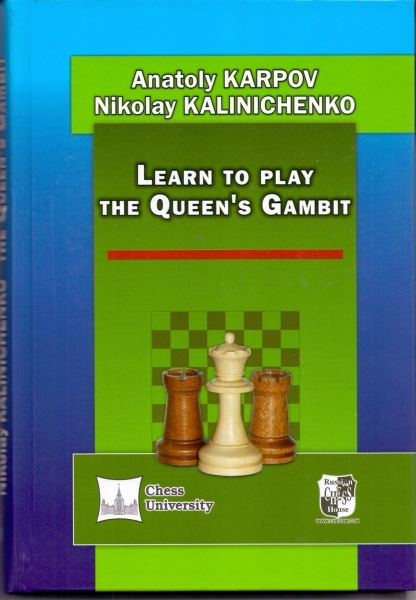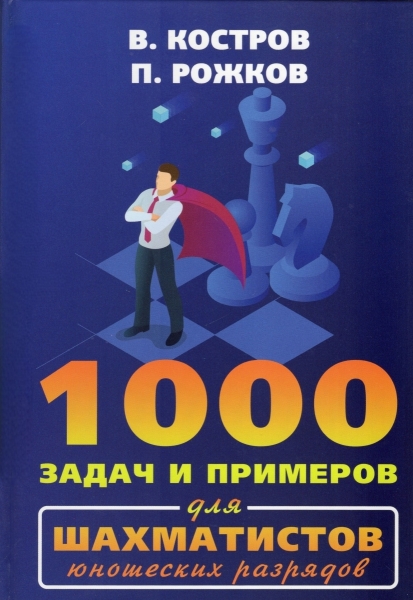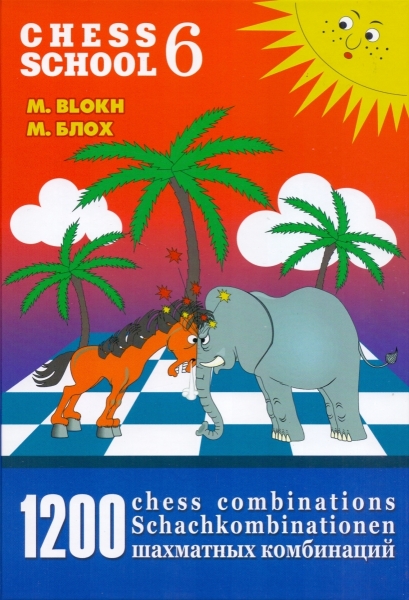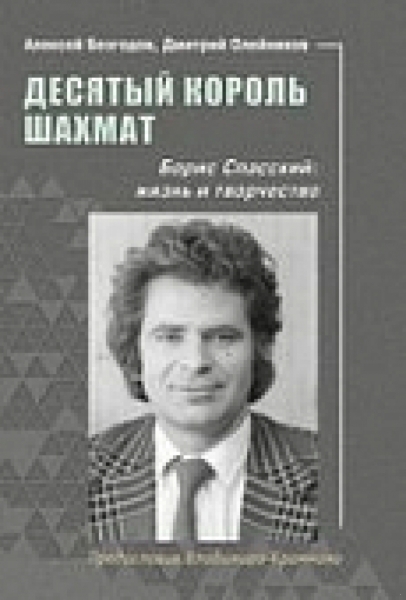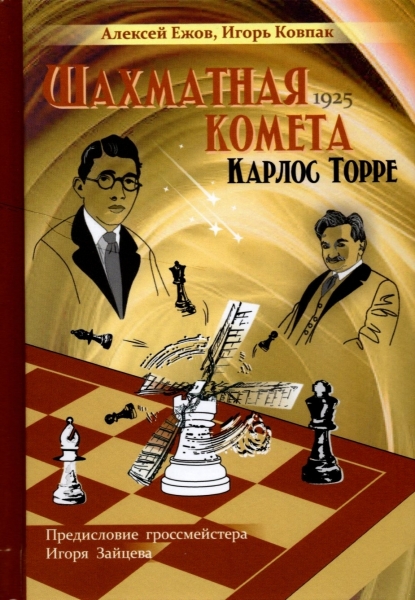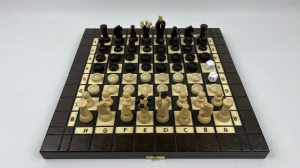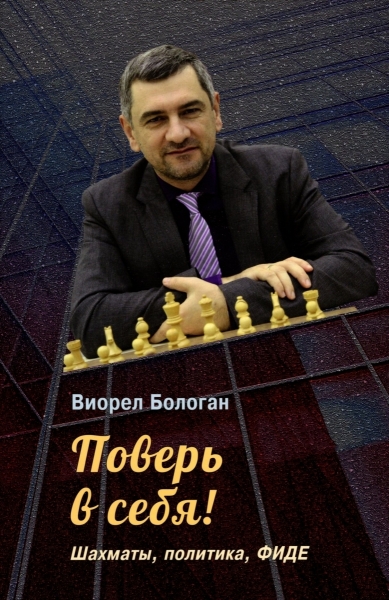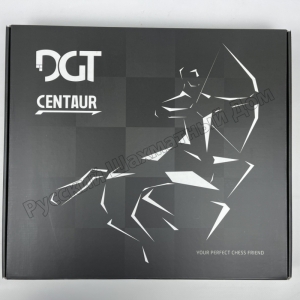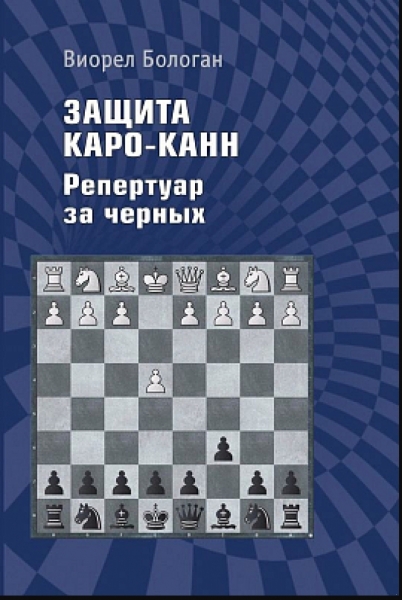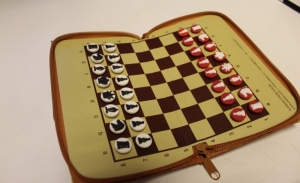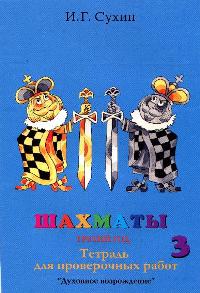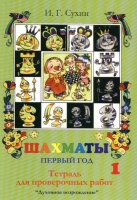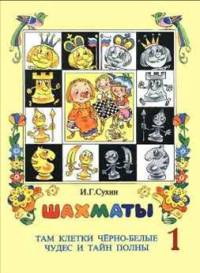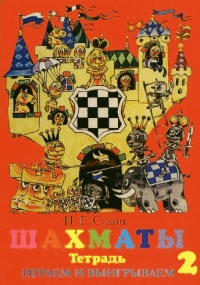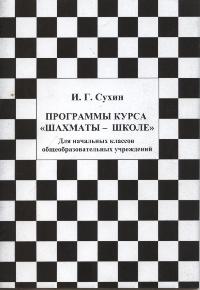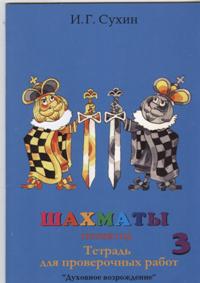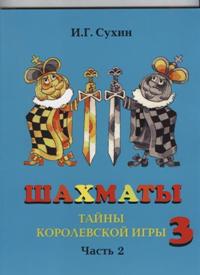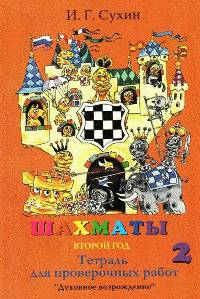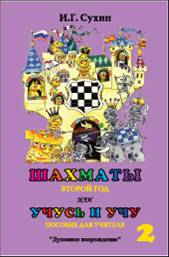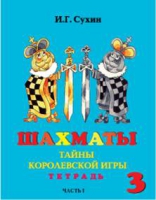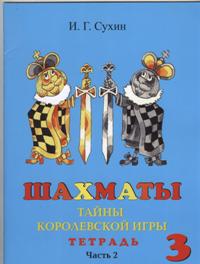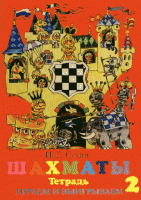Chess textbook 1991-2023
-
22.76 $
The manual explains how a teacher with minimal chess preparation to conduct classes with third-year students on the textbook "Chess, Third Year, or the Secrets of the Royal Game". The most serious attention is paid to non-standard entertaining tasks. For teachers who are familiar with chess only on the basis of materials from the CMB & laquo; Chess, the first year & raquo; and & laquo; Chess, second year & raquo ;, necessary clarifications are made.
-
Each of the 15 verification works contains 16 questions (tasks), is designed for 10-15 minutes and is located on a separate sheet. The main task of the publication is to provide current control after passing through each major topic of the curriculum. There are two possible options for the control: 1. Before each test work, students are given the notebooks themselves. 2. Pupils are given only sheets with the current test work, pre-cut from a notebook. Therefore, on each sheet there are columns "number of school and class", "student's last name" and Notebook can be used at various stages of the educational process for frontal, group, individual work, for classes in pairs.
-
0.00 $
The world's first textbook chess game written specifically for the elementary comprehensive school. The textbook contains the most elementary chess material, which is fixed by a large number of unique didactic games and tasks. Despite the fact that the textbook was created for the first grade of primary school, it can be used at the initial stage of education and in other classes of the 1st grade school, as well as in the kindergarten preparatory school. This is ensured by the fact that in each type of didactic tasks and games there are tasks of different levels of complexity. The book is included in the training kit & laquo; Chess, first year & raquo;.
-
BOO A book and two workbooks - 1 set (in one copy)! This textbook continues the course of elementary education in a chess game and follows the textbook "Chess, first year, or there are black-and-white miracles and secrets full of cells." This course is unique and written specifically for elementary school. The theory of chess games is fixed with the help of a large number of didactic tasks and games, with the predominant use of illustrative material of a meaningful nature. The textbook is intended for the second class of a four-year elementary school, but can be used in classes in other classes. This is ensured by the fact that in each section students are offered both simple and complex tasks.
-
Programs of the course "Chess-school": For primary schools of general educational institutions Suhin
9.11 $
The publication presents a completed line of programs for the elective course "Chess for School," provided with three years of teaching and methodological training: "Chess, the first year," "Chess, the second year," and "Chess, the third year." The collection includes the first, second and third year programs. After the explanatory memorandum, for each year of the training, sample topics, didactic tasks and games, an approximate distribution of program material, requirements for the knowledge and skills of students, lists of recommended literature are presented.
-
The notebook is intended for the third year of study in any grade of primary school. Each of the 15 tests is designed for 15-25 minutes and is located on a separate sheet. The notebook can be used at various stages of the educational process for frontal, group, individual work, for classes in pairs.
-
This tutorial continues the course of the initial chess game training and follows the textbooks & laquo; Chess, the first year, or There the cells of black and white wonders and mysteries are full & raquo; and 'Chess, the second year, or Play and Win & raquo ;. The theory of the chess game is fixed with the help of a large number of didactic tasks and games, with the predominant use of illustrative material of a meaningful nature. The textbook is intended for the third grade of primary school, but can be used in classes in other classes. This is ensured by the fact that in each section students are offered both simple and complex assignments. To the textbook "Chess, the third year, or the secrets of the royal game". a methodical manual for the teacher (and parents) was developed, "Chess, the third year, or I study and teach".
-
The notebook is intended for the second year of study in any grade of primary school. Each of the 15 tests is designed for 15-25 minutes and is located on a separate sheet. The main task of the publication is to ensure ongoing monitoring after passing through each major topic of the curriculum. There are two equivalent options for monitoring: 1. Before each test work, students are given a notebook. 2. Students are given only sheets with the current test work, previously cut from the notebook. Therefore on each sheet there are columns "school and class number", "surname of the pupil". The notebook can be used at various stages of the educational process for frontal, group, individual work, for classes in pairs.
-
22.76 $
This manual explains how to teach a teacher with minimal chess preparation to conduct classes with pupils of the second year of study in the textbook "Chess, the second year, or Play and win". The benefit will be interesting for parents who help their children learn the basics of chess. For teachers who are familiar with chess only on the basis of the materials of CMQ & laquo; Chess, the first year & raquo ;, the necessary explanations are made. The manual describes in detail each of the 33 lessons, most of the tasks from the textbook with solutions are given.
-
Notebooks contain entertaining assignments that will help the child learn the basics of the chess game. Working with notebooks, the child will help the scattered artist: correct his mistakes, guess the riddles. In the workbooks, the material corresponding to the Chess program, the third year, is included, the textbook for schoolchildren & Chess, the third year, or the Secrets of the royal game & raquo; and a manual for the teacher & laquo; Chess, the third year, or I study and teach & raquo ;. Notebooks are designed for the third year of study in any grade of primary school.
-
8.28 $
The Notebook contains entertaining assignments that will help children learn the basics of the chess game. Work with the notebook, the student will solve chess problems, helping the scattered artist, as well as perform entertaining tasks. The notebook is intended for the third year of schooling in the third or fourth grade of primary school.
-
Notebooks contain entertaining assignments that will help the child learn the basics of the chess game. Working with notebooks, the child will help the scattered artist: correct his mistakes, guess the riddles. Worksheets include the material that corresponds to the Chess program, the second year, the textbook for schoolchildren & Chess, the second year, or Play and win & raquo; and a tutorial for the teacher & laquo; Chess, the second year, or I study and teach & raquo ;. Notebooks are designed for the second year of study in any grade of primary school. In the case of notebooks in the first class, it is not necessary to perform assignments related to the use of chess notation and recording, and most of the problems can be solved only by arrows.
-
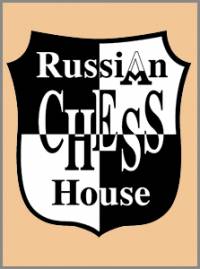 The life of a chess player in the system. Memories of the grandmaster
Author:
The life of a chess player in the system. Memories of the grandmaster
Author:
Averbah 45.00 $ -
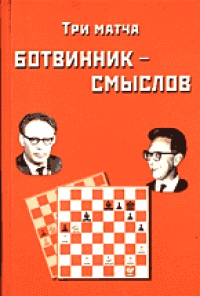 Три матча Ботвинник-Смыслов
Author:
Три матча Ботвинник-Смыслов
Author:
Botvinnik 45.00 $ -
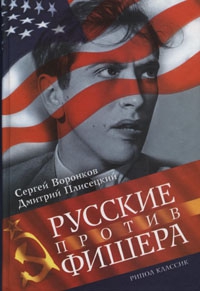 Russians vs Fisher
Author:
Russians vs Fisher
Author:
Voronkov 65.00 $ -
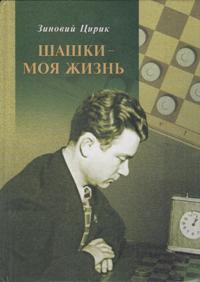 Checkers is my life
Author:
Checkers is my life
Author:
Ciric 87.50 $ -
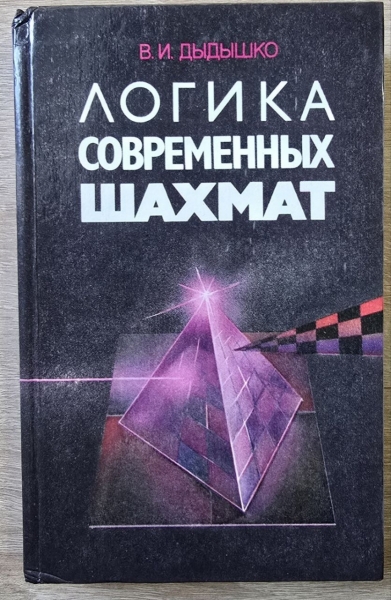 The logic of modern chess
Author:
The logic of modern chess
Author:
Dydyshko 72.50 $ -
 Siegbert Tarrasch. The Queen
Author:
Siegbert Tarrasch. The Queen
Author:
Tarrash 72.50 $ -
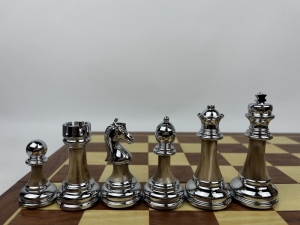 High quality acrylic metal heavy chess pieces with wooden board
202.50 $
High quality acrylic metal heavy chess pieces with wooden board
202.50 $
-
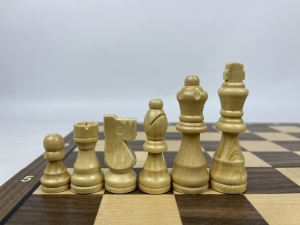 Wooden magnetic Staunton chess with a lock (silver)
56.25 $
Wooden magnetic Staunton chess with a lock (silver)
56.25 $
-
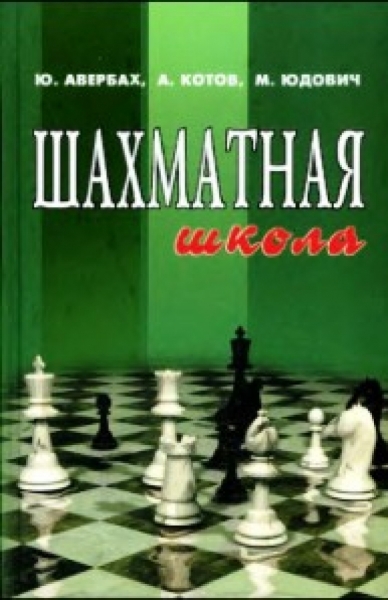 Chess school
Author:
Chess school
Author:
Averbah 15.00 $ -
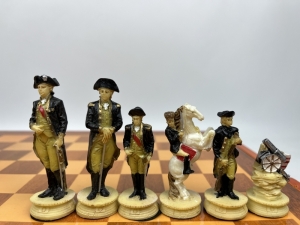 The chess set of The Chessmen. US war - Great Britain
325.00 $
The chess set of The Chessmen. US war - Great Britain
325.00 $
 Русский
Русский  Английский
Английский 